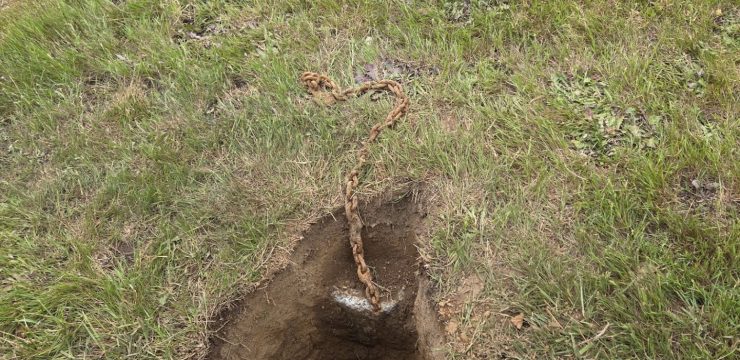Experts warn that three major regions in the United States face significant risks from tsunamis and flooding, highlighting a growing concern for the safety of coastal communities. These high-risk zones are the Pacific Northwest, the East Coast, and the Gulf Coast, each with unique vulnerabilities stemming from geological activity and environmental changes. Scientists have identified these areas as the most deadly tsunami zones in the country, and understanding the nature of the threats they face is critical for preparedness and resilience.

The primary dangers in these regions come from a mix of earthquakes, underwater landslides, and the rising sea levels that climate change has accelerated. Tsunamis, which are massive ocean waves triggered by seismic disturbances or underwater landslides, travel at incredible speeds across the water. As they approach shorelines, these waves can rapidly grow in height, sometimes reaching towering sizes that can inundate coastal areas within minutes. Because of their speed and destructive power, tsunamis pose a unique challenge compared to other natural disasters, making early warning and rapid evacuation essential.
The Pacific Northwest is by far the most vulnerable of the three regions. This area lies above the Cascadia Subduction Zone, a massive fault line where the Juan de Fuca tectonic plate slides beneath the North American plate. Scientists estimate there is a significant chance—some studies suggest around a 37 percent probability—that a major earthquake could strike this region within the next 50 years. Such an event would almost certainly trigger a powerful tsunami capable of devastating communities along the coasts of Oregon, Washington, and parts of Northern California. Given the proximity to this active fault zone, residents here face the greatest risk of experiencing a sudden, local tsunami, which can arrive with very little notice. As a result, emergency planners in the Pacific Northwest have been working diligently to improve evacuation routes, educate the public, and implement early warning systems to mitigate the impact of a potential disaster.
Meanwhile, the East Coast faces a different but no less serious threat. Unlike the Pacific Northwest, where the seismic activity is more frequent and local, the Eastern Seaboard is vulnerable to tsunamis generated by underwater landslides and earthquakes occurring far away, especially around the Caribbean fault lines.
Though the East Coast does not experience large earthquakes as regularly, the underwater terrain and tectonic activity in the Atlantic Ocean and Caribbean Sea can produce waves that travel long distances and threaten coastal cities from Florida all the way up to the northeastern states. The low-lying geography of much of the East Coast makes it particularly susceptible to flooding, and the combination of tsunamis with storm surges from hurricanes can exacerbate the risks faced by millions living near the shoreline.
The Gulf Coast, while considered to have a comparatively lower tsunami risk than the other two regions, still remains vulnerable. The flat coastal plains and the presence of underwater landslides pose a threat, especially when combined with rising sea levels and increased erosion. The Gulf Coast is also frequently battered by hurricanes and tropical storms, and the cumulative effects of these natural forces can heighten the danger of flooding and wave damage. Coastal communities in Texas, Louisiana, Mississippi, Alabama, and western Florida need to be aware of their vulnerabilities and take steps to prepare for both tsunamis and flooding events.
One of the critical issues with tsunamis is that warning systems often provide only minimal time to react, especially for tsunamis generated by nearby earthquakes or landslides. For local tsunamis, the window between sensing an event and the arrival of the wave can be just a few minutes. This means that personal awareness and quick action are vital to survival. Scientists and emergency responders stress that if you feel a strong earthquake while near the coast or notice the ocean suddenly receding—sometimes called a “drawback”—these are immediate signals to evacuate to higher ground without waiting for official warnings. Delays in evacuation can be fatal.
Climate change has compounded these threats by driving up sea levels and increasing coastal erosion. Higher sea levels mean that tsunamis and storm surges can penetrate further inland, causing more widespread flooding and damage. Coastal defenses that once protected communities may no longer be sufficient, and natural buffers like beaches and wetlands are shrinking. As a result, preparedness efforts must consider these changing conditions to ensure safety and resilience.
In response to these growing risks, scientists, emergency managers, and local governments are continually working to improve tsunami detection technologies, refine evacuation plans, and increase public awareness through education and drills. While the threat of tsunamis and flooding cannot be completely eliminated, being informed and prepared can make a lifesaving difference.
In summary, the Pacific Northwest, East Coast, and Gulf Coast face distinct but serious risks from tsunamis and flooding due to earthquakes, underwater landslides, and rising seas. The urgency of preparedness cannot be overstated—if you experience a strong quake or see the ocean pull back, evacuate immediately. Through vigilance, education, and improved safety measures, communities across these regions can better protect themselves against these powerful natural threats.





